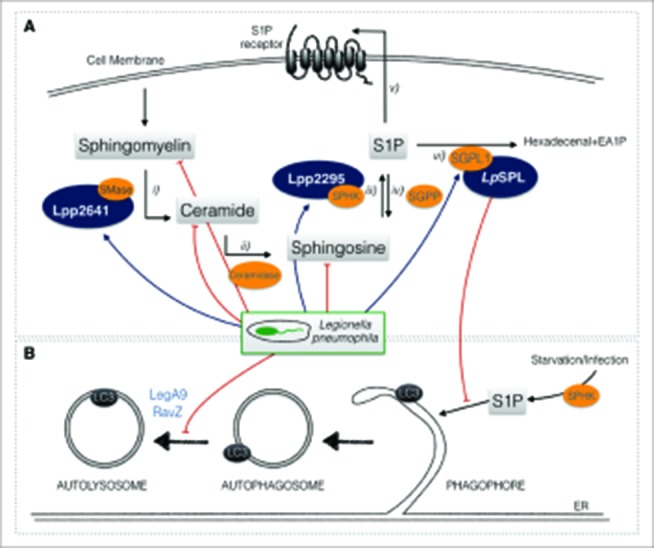Figure 1.

Legionella pneumophila modulates sphingolipid metabolism and autophagy during infection. (A) Simplified illustration of sphingolipid metabolism: i) sphingomyelin from plasma membranes is turned into ceramide by the enzyme sphingomyelinase (SMase). ii) Ceramide is then metabolized by ceramidase into sphingosine that iii) is phosphorylated by SPHK (sphingosine kinase) into sphingosine-1-phosphate (S1P), iv) a reaction that can be reverted by SGPP (sphingosine-1-phosphate phosphatase). v) S1P is secreted into the extracellular milieu, where it might act in a paracrine or autocrine way, or vi) may by broken down to hexadecenal and ethanolamine-1-phosphate (EA1P) by sphingosine-1-phosphate lyase (SGPL1). L. pneumophila decreases sphingolipid levels during infection (red arrows). It encodes 3 eukaryotic-like proteins that are homologs to enzymes that act in sphingolipid metabolism: Lpp2641 (putative sphingomyelinase), Lpp2295 (putative sphingosine kinase) and LpSPL (sphingosine-1 phosphate lyase) (blue arrows). LpSPL has been characterized functionally. (B) L. pneumophila restrains host autophagy during infection by secreting effectors that inhibit both autophagosome formation (LpSPL) and maturation (RavZ and LegA9).
